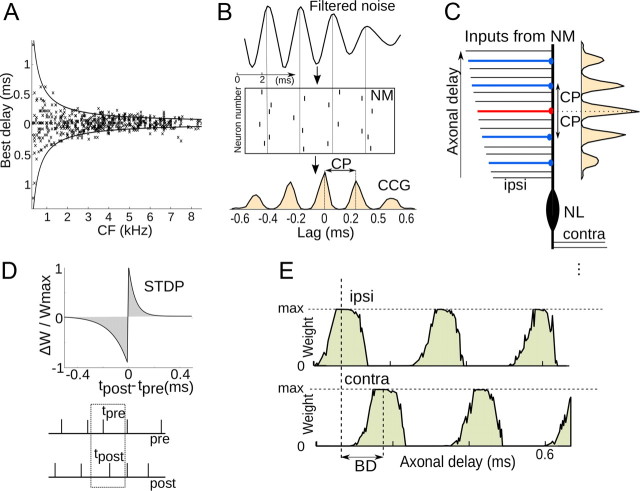Figure 1.
Principle of the model. A, BD versus CF for 625 cells of the barn owl ICCc (Wagner et al., 2007): 85% of all BDs are within the π-limit (solid curves). B, Top, The sound is bandpass filtered by the basilar membrane around a characteristic frequency (vertical units are arbitrary). Middle, Neurons in the NM encode the filtered sound in spike trains, with a temporal structure that reflects the filtering. Bottom, As a result, two NM neurons with the same CF show correlated firing, and the periodicity in the cross-correlogram corresponds to the characteristic period (CP = 1/CF). C, NM neurons project to binaural neurons in the NL, with different axonal delays (the correspondence between dendritic location and axonal delay is only an illustration choice). The periodicity in the cross-correlogram of input spike trains results in firing correlations at synapses with delays related by a integer multiple of the CP: firing at the synapse in red is correlated with firing at synapses in blue. D, Synaptic weights are modified depending on the relative timing of presynaptic (tpre) and postsynaptic spikes (tpost), for all pairs of spikes, with an asymmetrical function typical of excitatory synapses (Bi and Poo, 1998; Tzounopoulos et al., 2004). E, Correlated firing results in correlated synaptic weight modifications, so that stabilized synaptic weights are periodic with respect to their corresponding axonal delay, the period being the CP. It follows that the BD cannot be greater than the CP.

